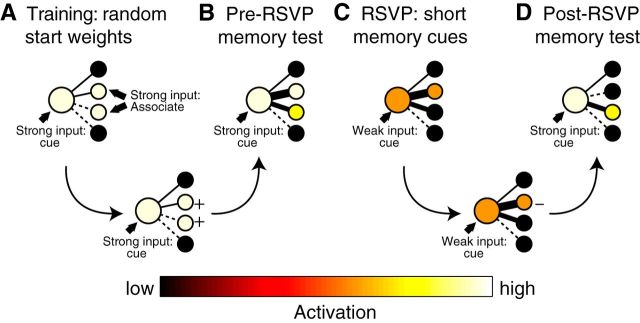Figure 1.
Predictions of the Norman et al. (2006a) neural network model. During training (A), both the cue and associate are presented together. Thinner lines indicate weaker connections. As a result of this strong coactivation, connections between the cue and features of the associate are strengthened (bottom row). Consequently, when the cue is presented in the pre-RSVP memory test (B), features of the associate are strongly activated through spreading activation. During the RSVP phase (C), the cue is presented only briefly, leading to partial cue activation, as well as partial reactivation of its most strongly associated features through spreading activation. As a result of this partial activation, connections between the cue and these strongly associated features are weakened; connections between the cue and other (inactive) features are unchanged (bottom row). Consequently, when the cue is presented in the post-RSVP memory test (D), activation preferentially spreads to features that were formerly weaker, yielding a “reversal” in the ordinal ranking of cued feature activations (in this example, the middle two features show a reversal).

